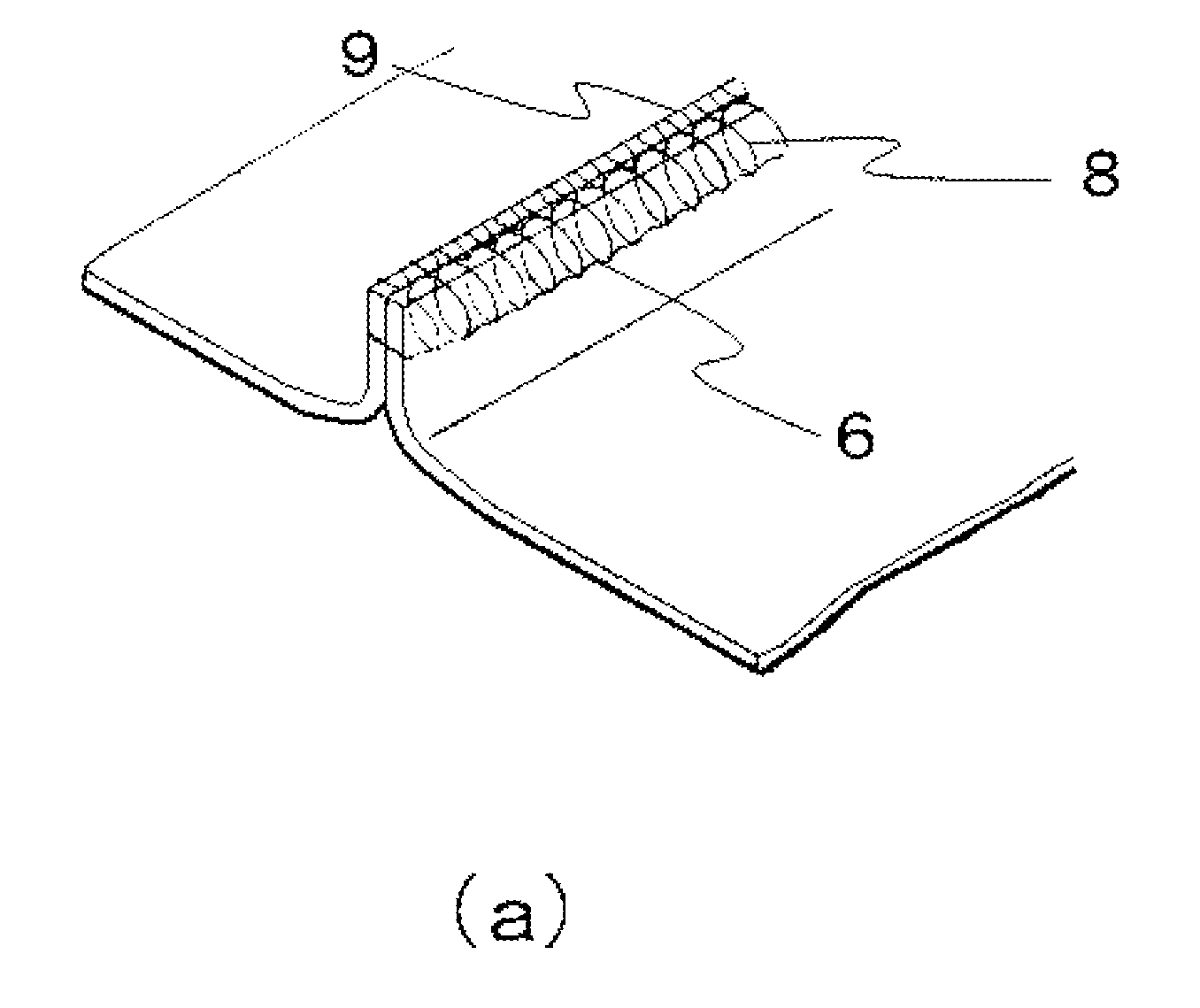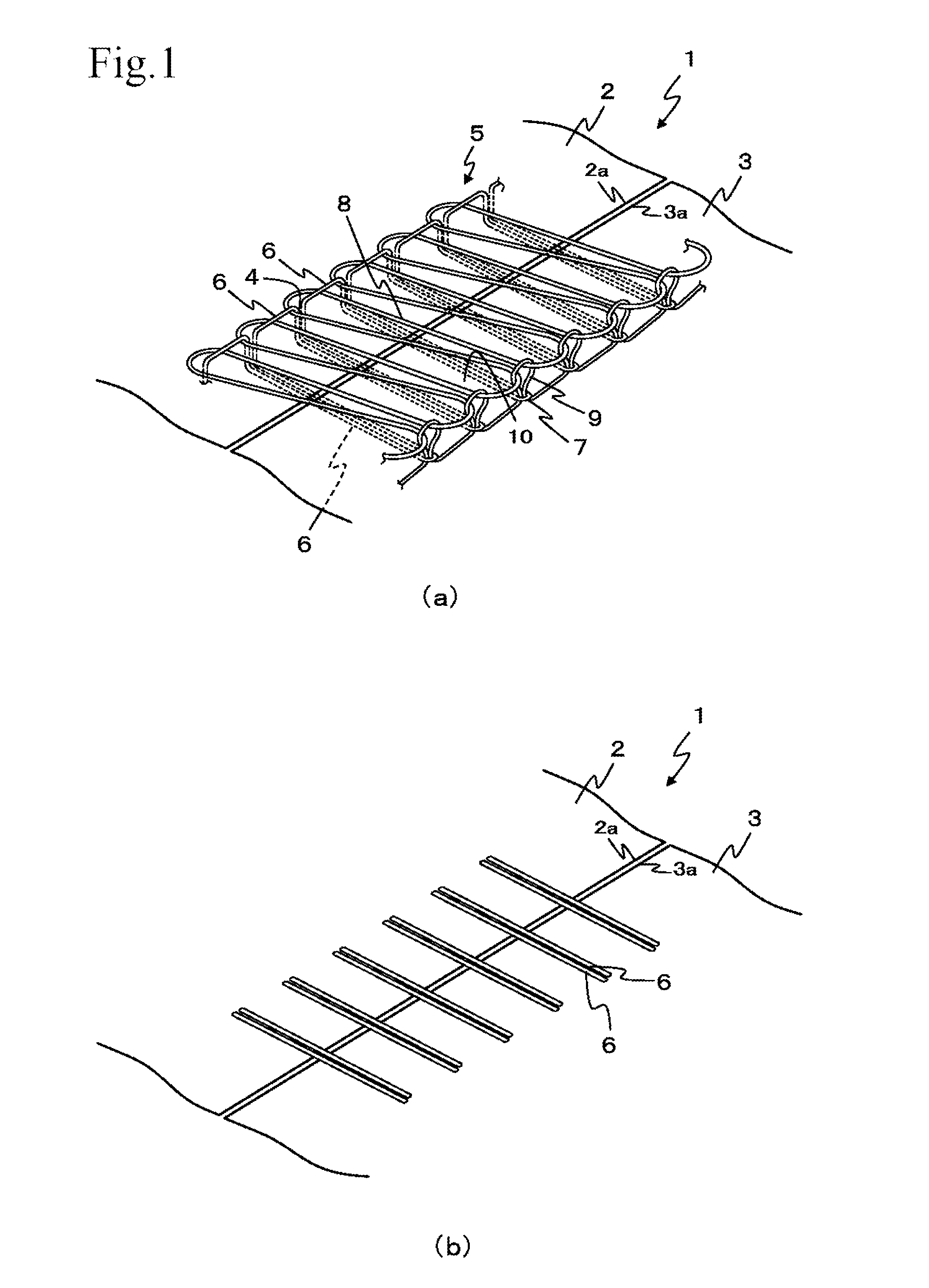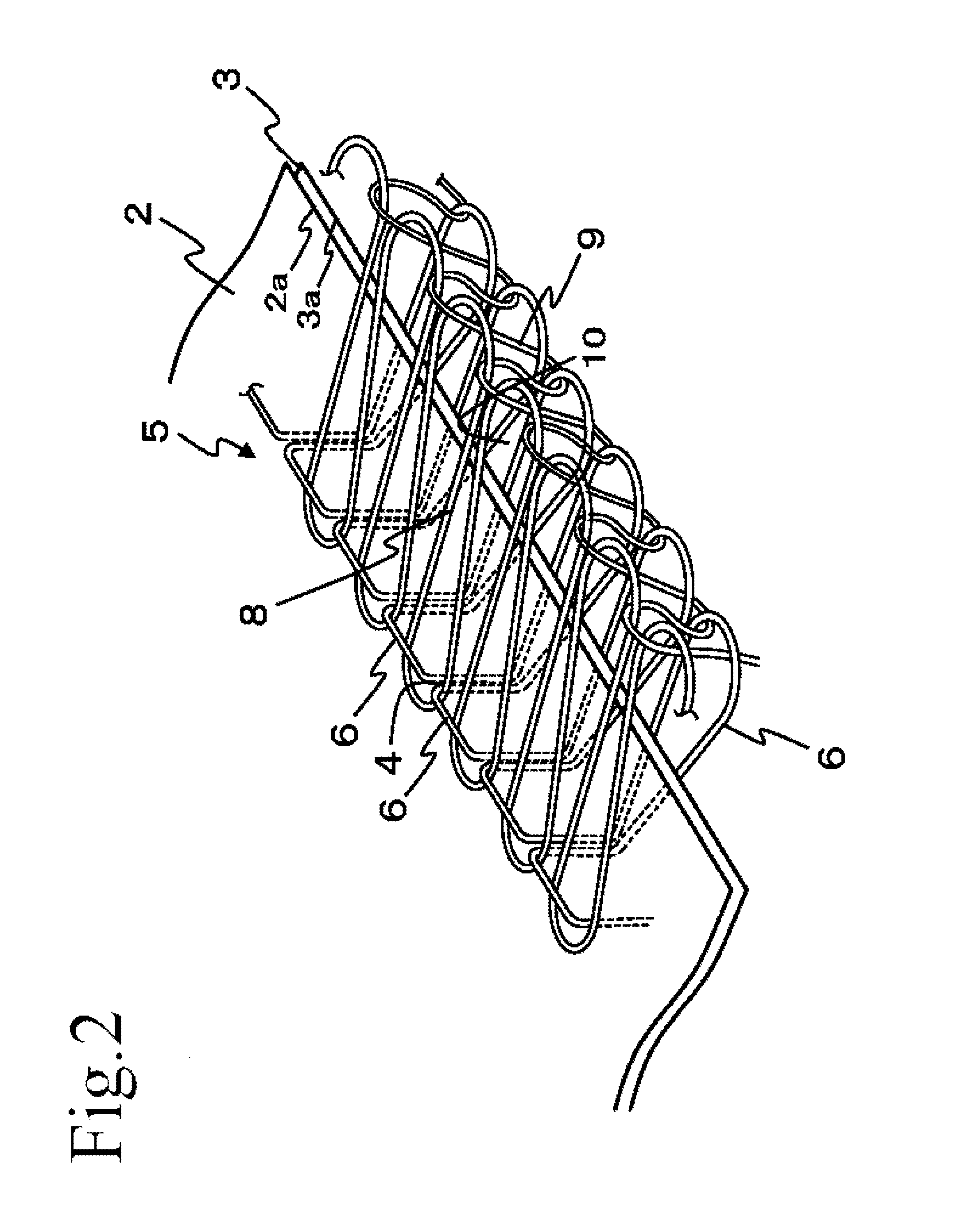Seam structure for fabric
a fabric and seam technology, applied in the direction of sewing stitches, textiles and paper, sewing apparatus, etc., can solve the problems of irritating skin, poor sewn-on portion resulting from such sewing by the overlock sewing machine, and exposed edges of fabric pieces, so as to achieve effective reduction of discomfort and aesthetics, and easy movement
- Summary
- Abstract
- Description
- Claims
- Application Information
AI Technical Summary
Benefits of technology
Problems solved by technology
Method used
Image
Examples
Embodiment Construction
[0028]The seam structure for fabric and sewing method of the present invention will be explained next with reference to accompanying drawings.
[0029]The seam structure for fabric of the present invention is a seam structure for fabric (1) in which edges (2a, 3a) of two pieces of fabric (2, 3) are joined to each other in a state where latter are connected to each other, as illustrated in FIG. 1(a), wherein: on the upper face of one piece of fabric (2) there extends, along the edge (2a) of the fabric, a stitch (5) that is formed as a result of a part of a needle thread (6) passing through the fabric to reach a lower face thereof through stitch holes (4) that are provided at regular intervals; on the upper face of the other piece of fabric (3) there are arrayed, along an edge (3a) of the fabric, a plurality of rings (7) that are formed as a result of protrusion of an annular leading end of the needle thread (6) having passed through the stitch holes (4) of the one piece of fabric (2) an...
PUM
 Login to View More
Login to View More Abstract
Description
Claims
Application Information
 Login to View More
Login to View More - R&D
- Intellectual Property
- Life Sciences
- Materials
- Tech Scout
- Unparalleled Data Quality
- Higher Quality Content
- 60% Fewer Hallucinations
Browse by: Latest US Patents, China's latest patents, Technical Efficacy Thesaurus, Application Domain, Technology Topic, Popular Technical Reports.
© 2025 PatSnap. All rights reserved.Legal|Privacy policy|Modern Slavery Act Transparency Statement|Sitemap|About US| Contact US: help@patsnap.com



